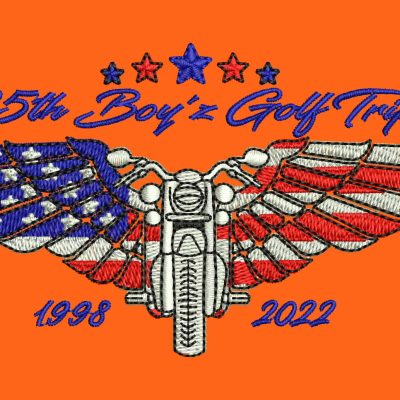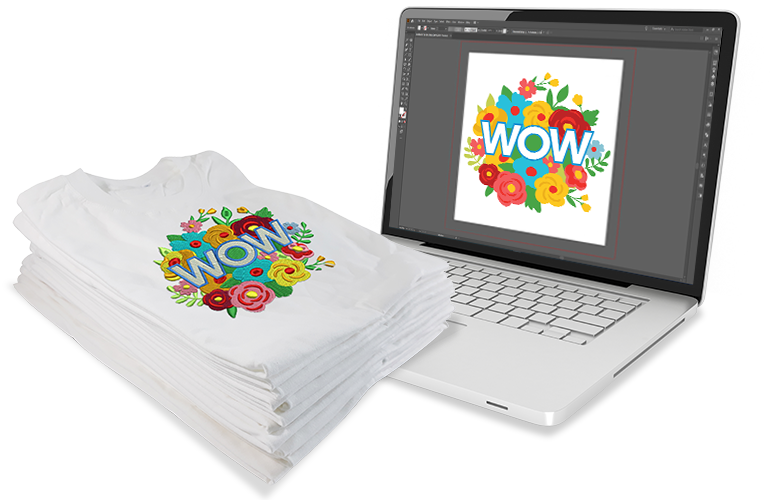Check Out Different Sorts Of Needlework Digitizing Methods
Embroidery digitizing has actually evolved dramatically over the years, providing a myriad of methods to bring layouts to life in the digital world. The world extends to a lot more advanced methods like photorealistic embroidery digitizing and the interesting realm of 3D embroidery digitizing.
Standard Hand Needlework Digitizing
Conventional hand embroidery digitizing entails the procedure of converting complex hand-stitched designs into digital formats for device needlework. This strategy requires knowledgeable artisans to carefully examine the handmade design and after that utilize specialized software application to recreate it in a digital style. Each stitch, color, and information needs to be thoroughly translated to ensure that the significance of the original hand needlework is protected in the digital version.
Among the key obstacles of typical hand embroidery digitizing is capturing the intricacies and nuances of the handmade design. Digitizing for Embroidery. Craftsmens must possess a deep understanding of different embroidery techniques, such as satin stitch, chain stitch, and French knots, to precisely reproduce these methods in the electronic realm. Furthermore, they require to have a keen eye for detail to guarantee that the digital style keeps the exact same level of creativity and craftsmanship as the original hand-stitched item
Punching Strategy
To effortlessly shift from traditional hand needlework digitizing to the punching method, artisans have to currently focus on transforming the complex digital layouts right into instructions that needlework devices can analyze. The boxing technique includes making use of specialized software application to develop digital data that contain commands for the needlework machine to comply with. This procedure requires a deep understanding of not simply the layout itself but likewise the capacities and limitations of the needlework equipment.

Auto-Digitizing Software Programs
Embroidery digitizing has actually been revolutionized by the introduction of auto-digitizing software application, giving craftsmens with advanced tools to convert electronic layouts into embroidery equipment directions successfully. Auto-digitizing software program programs use formulas to analyze electronic images or vector data and create needlework layouts instantly. These programs allow for quick and exact conversion of intricate designs into stitch patterns, saving time and effort for embroiderers.
Among the vital advantages of auto-digitizing software is its user-friendly user interface, making it available to both newbies and experienced digitizers. These programs frequently include functions such as stitch editing and enhancing devices, string shade matching, and the capacity to sneak peek the last stitched layout. Additionally, auto-digitizing software can take care of intricate styles with multiple shades and intricate information, helpful site creating top notch needlework files suitable for numerous garments and fabric tasks.
While auto-digitizing software application uses benefit and effectiveness, it is vital for users to recognize the constraints of automated digitizing. Fine-tuning and manual changes might still be needed to achieve the wanted needlework high quality, especially when dealing with detailed or one-of-a-kind styles. By leveraging the capabilities of auto-digitizing software along with hands-on digitizing methods, artisans can boost their needlework digitizing process and produce spectacular stitched pieces.
Photorealistic Needlework Digitizing
Utilizing advanced electronic imaging techniques, attaining photorealistic results in needlework digitizing has come to be an in-demand skill amongst modern artisans. This strategy see involves transforming high-resolution images right into intricate stitch patterns that very closely imitate the initial layout, resulting in embroidery items that display natural detail and deepness.
To achieve photorealistic needlework digitizing, craftsmens need to have a keen eye for information and a complete understanding of how various stitch kinds and densities can influence the final end result. By carefully drawing up each shade and shade in the picture, embroiderers can create a digital documents that guides the embroidery device to duplicate the nuances of the original photo precisely.
Photorealistic needlework digitizing is specifically preferred in developing personalized layouts for garments, home style, and art items where recording the significance of a picture or art work is critical. This strategy allows craftsmens to transform memories, landscapes, click now portraits, and elaborate artwork right into magnificent stitched work of arts that display a blend of standard workmanship and innovative innovation.
3D Embroidery Digitizing
With the development of digital imaging strategies in attaining photorealistic lead to embroidery digitizing, the exploration of 'D Embroidery Digitizing' offers a brand-new measurement to the ins and outs of style replication. 'D Embroidery Digitizing' refers to the three-dimensional digitizing technique that includes deepness and structure to embroidery styles, producing a much more reasonable and aesthetically appealing end product. This method utilizes software application that imitates the result of light and darkness on the needlework style, improving its total aesthetic influence.
Among the crucial benefits of 'D Embroidery Digitizing' is its ability to make layouts look even more realistic and dynamic. By including deepness to the embroidery style, the end product appears more practical and captivating (Digitizing for Embroidery). Additionally, this strategy enables for more creative freedom in design implementation, making it possible for embroiderers to trying out various textures and effects that were previously testing to accomplish
Conclusion
